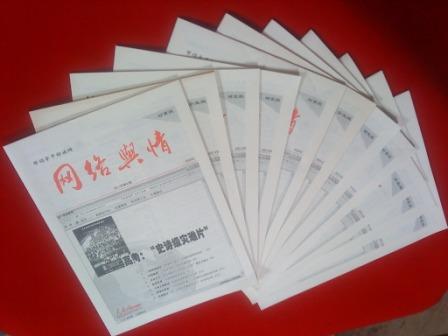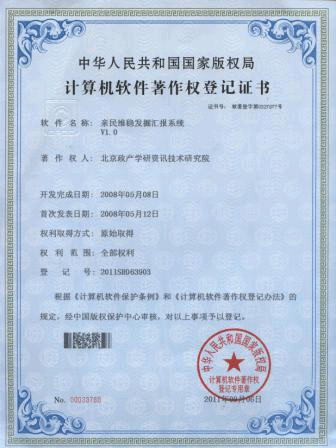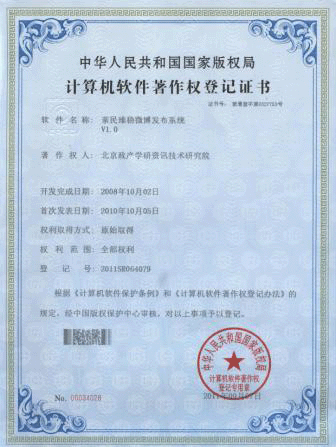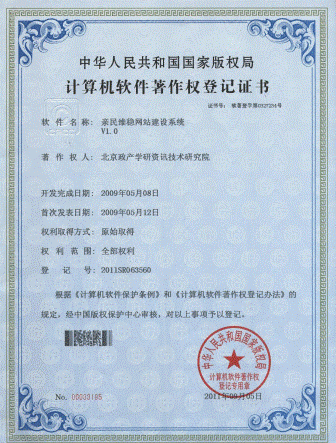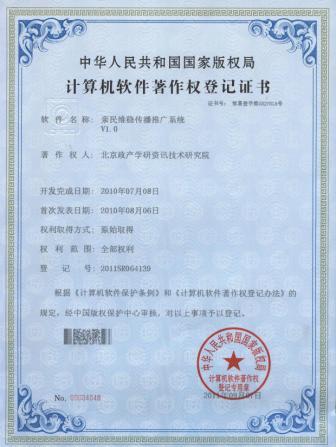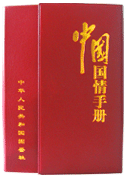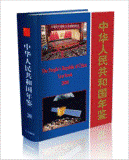亲民维稳热点推荐
- ·Libor监管离不开美国的积极参与--亲
- ·海通证券上半年净赚20亿同比降9%--亲
- ·浙江现象的启示--亲稳网络舆情监测室
- ·B股屡屡“吓坏”A股 制度改革箭在弦
- ·“银行系垫底公司”总经理离职幕后--
- ·宋冰接手蔡金勇 高盛高华首位女性总
- ·基建投资热潮下 警惕平台贷风险抬头-
- ·德国联邦外贸与投资署:欧债危机未影
- ·中国银行业加快融入全球化浪潮--亲稳
- ·DIY货币——重建熟人社会--亲稳舆论
- ·美国能源市场恐受波及--亲民维稳网络
- ·财经-宜信财富中国财富管理系列论坛
- ·孟文能:让金融业回归本质--亲稳舆论
- ·国际油价止跌反弹国内成品油调价添变
- ·万得诉同花顺侵权索赔近亿元--亲稳网
- ·金融秩序重构--亲稳网络舆情监测室
即刻使用亲民维稳解决方案!

发掘汇报软件
亲民维稳相关链接
- ·出台扩大股转系统试点范围方案--亲稳
- ·出台扩大股转系统试点范围方案--亲稳
- ·一周财讯--亲民维稳网络舆情监测室
- ·张承惠:不差钱的金融市场难匹配城镇
- ·专家称银行应适应互联网需求--亲稳舆
- ·理顺机制尤为重要(明星教授)--亲稳
- ·假新闻袭击金融--亲稳舆论引导监测室
- ·支付行业快速扩张--亲民维稳网络舆情
- ·“三马”闯两江--亲稳网络舆情监控室
- ·“金融创新不足”致结构调整举步维艰
- ·IMF:中国内需支持亚洲经济--亲民维
- ·小摩:2013年全球经济增速2.4%--亲稳
- ·对外资产结构失衡FDI撤资风险、资产
- ·一季度北京金融业增加值619亿元 同比
- ·分析机构预测:汽油将微涨0.06-0.09
使用亲民维稳全套解决方案邀请
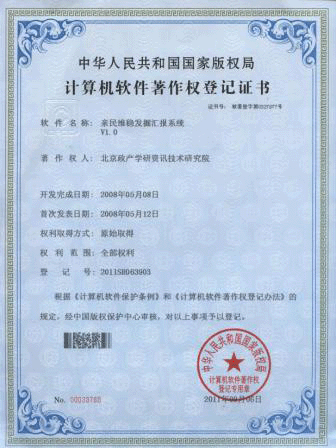
亲稳发掘汇报系统
对外资产结构失衡FDI撤资风险、资产收益率过低并存--亲民维稳网络舆情监测室
2013-05-21
康子冉
Kang Zi ran
作为世界最大的债权国,中国庞大的对外资产现状并不如其规模看起来那样乐观。
As the world's largest creditor nation,China's huge foreign assets status quo is not as optimistic as scale look.
截至2012年12月末,我国对外金融资产达51749亿美元,对外金融负债达34385亿美元,对外金融净资产为17364亿美元。然而,从资产结构上看,中国对外资产以外汇储备资产为主,对外负债以股权型负债(FDI、股本证券)为主,即主要以股权型负债吸引外资,并通过外汇储备对外投资。
As of late December 2012,China's foreign financial assets of $5.1749 trillion,Foreign financial liabilities of $3.4385 trillion,Foreign financial net worth of $1.7364 trillion.however,Look from the assets structure,China's foreign assets is given priority to with foreign currency reserve assets,Type of foreign debt to equity liabilities(FDI/Equity securities)Give priority to,Type is mainly equity liabilities to attract foreign investment,And through the foreign exchange reserves of foreign investment.
另一方面,在资产持有者来看,中国对外净资产为正,主要来自巨额的外汇储备,如果不考虑外管局持有的外汇储备,私人部门对外净资产为负值。
On the other hand,In the asset holder,China's net assets is positive,Mainly from large foreign exchange reserves,If you don't consider safe's holdings of foreign exchange reserves,Foreign private sector net negative.
两者的不平衡,带来了中国对外资产收益率过低,以及宏观经济抗风险能力偏弱两大隐忧。
The imbalance,Has brought China's foreign assets yield is too low,And ability to resist risk weak macro economy two big concerns.
对外债权比例过大 Foreign debt ratio is too large
尽管对外资产规模庞大,但其资产配置结构上始终处于重债券、轻股权;重外汇储备、轻对外投资的态势。
Although large foreign assets,But always on their asset allocation structure in heavy debt/Light equity;Heavy foreign-exchange reserves/Light of foreign investment.
数据显示,截至去年12月末,在对外金融资产中,我国对外直接投资达5028亿美元,证券投资2406亿美元,其他投资10437亿美元,储备资产33879亿美元,分别占对外金融资产约9%、4%、20%和65%。
According to data,As of late December last year,In the foreign financial assets,China's foreign direct investment of $502.8 billion,Securities investment of $240.6 billion,Other investments of $1.0437 trillion,Reserve assets of $3.3879 trillion,Foreign financial assets accounted for about 9%/4%/20% and 65%.
而据有关机构测算,我国三分之一的外汇储备资产是用美国国债的形式持有。
And according to the relevant institutions is calculated,One third of the foreign currency reserve assets in our country is in the form of Treasury holdings.
受此影响,我国对外投资收益曾呈现不敌FDI收益的局面。
Affected by this,China's foreign investment was presented by situation of FDI's earnings.
以2011年为例,2011年的中国国际收支平衡表数据显示,2011年负债的成本为1549亿美元,净逆差为268亿美元。而2011年底,我国对外资产累计4.7万亿美元,对外负债2.0万亿美元,由此测算对外资产累计收益率为2.7%,对外负债成本累计为5.2%。
In 2011, for example,In 2011 China's balance of payments figures show,In 2011, the cost of debt of $154.9 billion,A net deficit of $26.8 billion.By the end of 2011,China's foreign assets total $4.7 trillion,Foreign debt of $2 trillion,The measure of foreign assets of 2.7% total return,Foreign debt costs for 5.2%.
也就是说,外资在华投资收益率高出了中国对外资产收益率1倍左右。
That is to say,Foreign investment rate of return on investment in China by Chinese foreign assets around 1 times.
而今年以来,随着资本项目放开进程的加速,这一局面才开始改善。
And since this year,With the acceleration of capital account opening process,The situation began to improve.
今年2月,央行首次公布资本项目开放时间表,短期安排(一至三年),放松有真实交易背景的直接投资管制,鼓励企业走出去;中期安排(三至五年),放松有真实贸易背景的商业信贷管制;长期安排(五至十年),依次审慎开放不动产、股票及债券交易。
In February this year,Central bank announced opening capital project schedule for the first time,Short-term arrangements(One to three years),Relax with real transaction background of direct investment restrictions,Encourage enterprises to go out;Medium-term arrangement(Three to five years),Relax with real trade background, commercial credit controls;Arrange for a long time(Five to ten years),Carefully open the real estate in turn/Stock and bond trading.
根据去年12月末对外直接投资占对外金融资产的比重9%来计算,比上年末的7.71%提高了1.29个百分点,而2010年末则为7.57%,2009年末为6.53%。
According to the end of December last year foreign direct investment accounted for 9% of the proportion of foreign financial assets,An improved 1.29% 7.71%,And at the end of 2010 was 7.57%,At the end of 2009 was 6.53%.
与此同时,储备资产占对外金融资产的比重下降至65%,这显示了我国在增加对外直接投资、减少储备资产方面已经取得了一定的进步。
At the same time,Reserve assets accounted for the proportion of foreign financial assets had fallen to 65%,It shows that the increase in foreign direct investment in China/Reduce the reserve assets has made certain progress.
官方、民间对外资产配置失衡 The official/Private foreign asset allocation imbalances
除了结构上投资债券比重过大的问题,中国对外资产的另一个失衡存在于对外资产、负债情况在政府和民间的配比。
In addition to the structure of the proportion of investment bonds too big problem,China's foreign assets of another imbalance exists in foreign assets/Ratio of liabilities in the government and folk.
据中金公司此前统计,中国对外净资产达2万亿美元左右,其中,政府部门的外汇储备为3.2万亿美元左右,这意味着中国非政府部门对外净负债约1.2万亿美元,相当于GDP的近20%。
According to cicc after statistics,China's net worth of $2 trillion or so,Among them,Government department of foreign exchange reserves to $3.2 trillion,This means China non-governmental sector net foreign debt of about $1.2 trillion,Equivalent to almost 20% of GDP.
但业内普遍认为,这种资产负债结构在政府、私人部门不平衡的配置,长期会带来较大的金融风险:当对经济增长前景的担忧加剧时,非政府部门资产的重新配置将导致资本流出扩大。
But the industry is generally accepted that,This kind of assets and liabilities structure in the government/Private sector imbalances in the configuration,For a long time can bring greater financial risk:When intensifying worries about the growth prospects of the economy,Non-governmental sector assets reconfiguration will lead to expand the capital outflow.
而2011年年底以来,人民币贬值预期的加剧,以及今年汇率双边波动格局的日渐形成,似乎正在印证这样的观点。
And since the end of 2011,Depreciation is expected,And this pattern is formed of bilateral exchange rate fluctuations,Appears to confirm this point of view.
2011年末,随着主权债务危机的蔓延,海外金融形势动荡,曾出现过发达国家FDI从中国撤资,并调拨资金回救母国企业的情况。
At the end of 2011,With the spread of the sovereign debt crisis,Overseas financial instability,There have been FDI in the developed countries withdraw from China,Of the enterprises and in allocating funds back to save his or her home country.
数据显示,2011年10月开始,长期保持月均3000亿元左右的外汇占款,连续3个月出现了-248亿元、-279亿、-1003亿元的减少,与此同时,结售汇顺差、外汇储备增速也出现了快速下降。
According to data,October 2011,Long-term average monthly 300 billion yuan of foreign exchange,For three consecutive months appeared - 24.8 billion yuan/- 27.9 billion/- 100.3 billion yuan,At the same time,Written guarantee surplus/Foreign exchange reserves also appeared a rapid decline in growth.
去年4月国家外管局停止了强制结售汇的外汇管理政策,企业、个人允许自由保存经过合法渠道获得的外汇,或许这已是对外资产的配置向民间转移打开的政策通道。
In April last year the national safe stopped out of foreign exchange management policy,enterprise/Personal allow freedom to save foreign exchange through legal channels,Perhaps this is foreign asset allocation policy of opening up to private transfer channel.
数据显示,2012年中以来,商业银行机构的外汇存款开始呈现大幅增长,从年初的2898.76亿美元增长到8月的4150.66亿美元的高点,仅仅8个月增长了1252亿美元,高于从2004到2011年末7年增长总量1221亿美元。
According to data,Since mid - 2012,The foreign exchange deposits of commercial Banks showed a growth,In the year of $289.876 billion to $415.066 billion in August,Rose by $125.2 billion just eight months,Higher than the total growth from 2004 to 2011 at the end of seven years to $122.1 billion.
外管局认为,银行体系只能将吸收的大部分外汇存款转向对外贷款、投资和拆借,反映为银行境外资产增加,并没有离开国内金融体系,只是资金在公司部门与银行部门之间的转移,相当于“藏汇于民”,不代表资本外流。
Safe's think,Banking system can only be absorbed most of the foreign exchange deposits to lend/Investment and lending,Reflect for bank assets abroad,Did not leave the domestic financial system,Only money transfers between the corporate sector and banking sector,Is equivalent to"Hide sinks to the people",Do not represent capital outflows.
这一现象很大程度上意味着,尽管相比巨大的外储存量,进展缓慢,但对外资产的持有重心已经开始从官方向民间的转移。
This phenomenon is largely means,Although compared with the huge storage capacity,Progress has been slow,But foreign asset holdings has begun to focus from the official transfer of folk.
(本报记者孙红娟对此文亦有贡献)
(Our reporter Sun Gongjuan for article contributed)
亲稳链接:链接亲民维稳,践行稳中求进!
- 出台扩大股转系统试点范围方案--亲稳网络舆情监测室
- 出台扩大股转系统试点范围方案--亲稳网络舆情监控室
- 一周财讯--亲民维稳网络舆情监测室
- 张承惠:不差钱的金融市场难匹配城镇化的资金缺口--亲稳网络舆情监测室
- 专家称银行应适应互联网需求--亲稳舆论引导监测室
- 理顺机制尤为重要(明星教授)--亲稳网络舆情监控室
- 假新闻袭击金融--亲稳舆论引导监测室
- 支付行业快速扩张--亲民维稳网络舆情监测室
- “三马”闯两江--亲稳网络舆情监控室
- “金融创新不足”致结构调整举步维艰--亲民维稳网络舆情监测室
- IMF:中国内需支持亚洲经济--亲民维稳网络舆情监测室
- 小摩:2013年全球经济增速2.4%--亲稳舆论引导监测室
- 对外资产结构失衡FDI撤资风险、资产收益率过低并存--亲民维稳网络舆情监测
- 一季度北京金融业增加值619亿元 同比增长11%--亲稳舆论引导监测室










